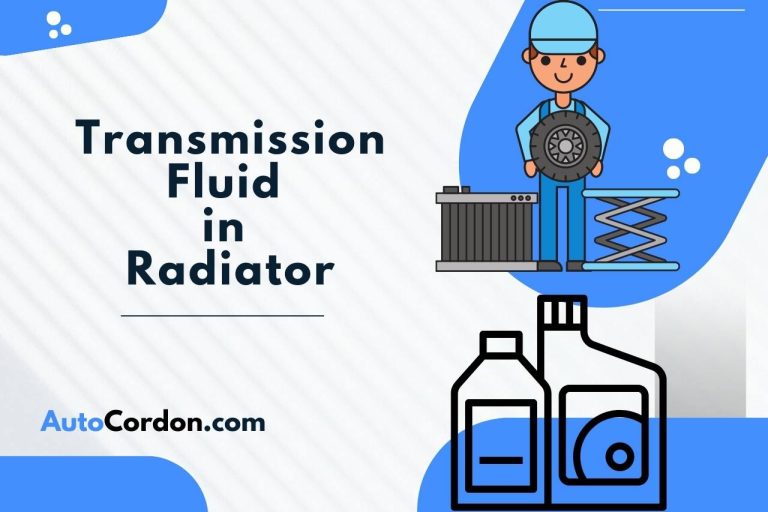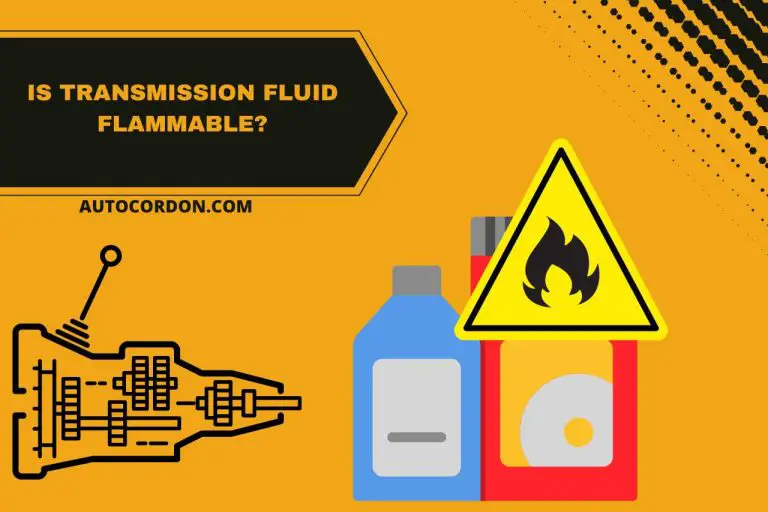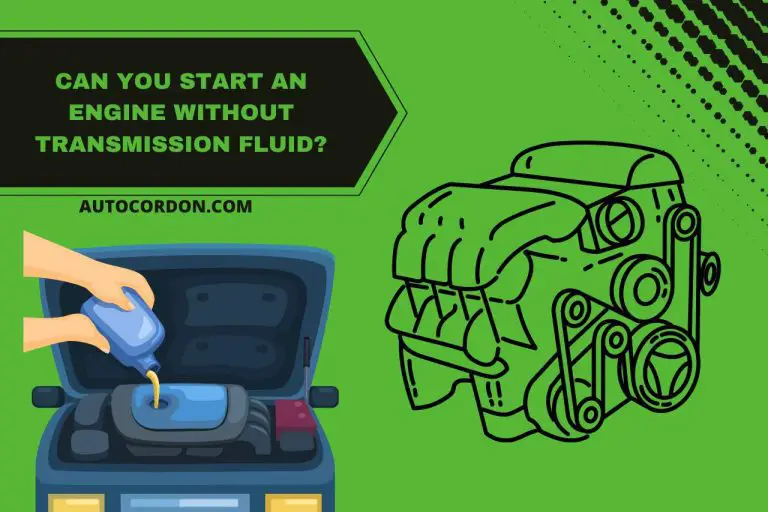Bubbles in Transmission Fluid – Debunking Common Myths!
Are enigmatic bubbles in the transmission fluid of your car worrying you? Do not be fretful; you have reached the final location to solve the mystery! This article is committed to providing you with in-depth explanations and professional advice to help you comprehend, identify, and treat the phenomena of bubbles in transmission fluid. Understanding the symptoms and effects of transmission fluid bubbles as an auto enthusiast or owner is essential to preserving the functionality and health of your car’s transmission system. This article will take you on a tour through transmission repair and maintenance complexities, arming you with the information you need to keep your car in good working order.
Should Transmission Fluid have Bubbles?
Ideal transmission fluid should be bubble-free. Transmission fluid bubbles may indicate possible transmission system difficulties, which should be fixed immediately to prevent more complications.
Overfilling the transmission fluid can lead to foaming and the subsequent production of bubbles. When the transmission fluid is stirred, contaminants like dirt, debris, or water can enter the fluid and cause bubbles.
Air can enter the transmission system through leaks, mix with the fluid, and create bubbles.
Air can enter the transmission system through worn or damaged seals and gaskets, causing bubbles to form in the fluid.
The breakdown and foaming of the transmission fluid at high temperatures might result in the presence of bubbles.
Other symptoms, such as difficulties shifting gears, transmission slippage, or strange noises, may also be present in addition to bubbles in the transmission fluid.
It’s critical to have the car evaluated by a licensed mechanic or a transmission specialist if you observe bubbles or have any transmission-related problems.
What Causes Bubbles in Transmission Fluid?
- Overfilling the transmission fluid can result in excessive turbulence inside the transmission, which can cause bubbles to form.
- Through a damaged seal, gasket, or from outside sources, contaminants like dirt, debris, or water can get into the transmission fluid. These impurities may cause the fluid to foam, resulting in bubbles.
- Air can get inside the transmission system through a leak and mix with the fluid. As a result, bubbles may form when the fluid moves through the gearbox.
- Seals and gaskets within the transmission may deteriorate over time, allowing air into the system. Air bubbles may result from this in the fluid.
- High operating temperatures might bring on the breakdown and foaming of the transmission fluid. Heavy driving, towing, or inadequate cooling can all result in excessive heat generation.
- The transmission pump does the fluid circulation within the transmission. The creation of bubbles may occur if the pump cannot maintain the required fluid pressure due to damage or malfunction.
- Extreme pressure variations can occasionally cause cavitation in the transmission fluid. Cavitation is the term used to describe the emergence and subsequent dissolution of air bubbles in a fluid, which can harm interior parts.
- Foaming and bubble formation might result from incorrect transmission fluid type since some fluids can not work with the transmission’s design.

How to Get Rid of Air Bubbles in Transmission Fluid?
Turn off the engine once you have parked your car on a level surface, and apply the parking brake. Verify that the fluid level is within the dipstick’s advised range.
If it is low, add the proper kind of transmission fluid following your vehicle’s specifications. Look for any indications of transmission fluid leakage near the cooler lines, gasket, and transmission pan. Have any leaks fixed by a specialist as soon as you notice them.
Consider doing a transmission fluid swap if you believe the transmission fluid to be polluted or deteriorated.
The old fluid must be drained out and cleaned, and new fluid must then be added. A fluid exchange can enhance transmission performance by removing air bubbles.
A bleeder valve may be found in the transmission cooler lines or on some automobiles’ transmissions. The system is bled by opening the valve to let the air out while adding fresh fluid.
To correctly complete this procedure, according to the manufacturer’s instructions or the service handbook for your car.
When a professional performs a transmission flush, old fluid and debris are flushed out and replaced with fresh fluid using specialized equipment.
Air bubbles and other impurities in the transmission system may be eliminated.
Take the car for a test drive after completing maintenance on the transmission fluid to allow the fluid to circulate throughout the transmission. Any lingering air bubbles can be spread out by doing this.
It may occasionally require a few fluid exchanges or flushes to remove air bubbles from the transmission fluid.
How Do We Prevent the Transmission of Fluid Bubbles?
- Follow the recommended maintenance schedule provided by the manufacturer for your vehicle, which should include routine transmission fluid replacements. Foaming and contamination are less likely when the fluid is fresh and clean.
- Use only the type of transmission fluid recommended in the owner’s manual for your car. Foaming and bubble formation might result from using the wrong kind of fluid.
- Check your car frequently for any indications of transmission fluid leaks. Air can enter the system through leaks, which causes bubbles in the fluid.
- Use the dipstick to check the transmission fluid level often. Make sure it falls within the advised range. Foaming may result from low fluid levels.
- Turbulence and foaming might occur in the gearbox if the fluid level is too high. Always adhere to the owner’s manual’s recommended fluid level.
- Avoid driving aggressively and making abrupt switches since they can overheat and agitate the fluid.
- Before putting the car in park, apply the parking brake. Doing this protects the parking pawl and transmission parts from undue strain when a vehicle is parked on an incline.
- Driving is best done once the engine and transmission have warmed up, especially in colder climates. This promotes optimum fluid lubrication and circulation.
- Make sure the cooling system in your car is functioning properly. The breakdown and foaming of the transmission fluid can result from overheating.
- Make sure you don’t exceed the vehicle’s recommended towing capacity if you tow.
- Excessive heat and stress on the transmission can result from towing more than it can handle.
- Have a certified mechanic or transmission specialist frequently inspect your transmission and fluid. Any possible problems may be found early on and fixed before becoming more serious.
What are the Risks of Ignoring Bubbles in the Transmission Fluid?
- Aeration or foaming, which can result in a loss of lubrication in crucial components, can be indicated by bubbles in the transmission fluid. This could result in more friction and wear, which could harm clutch plates, gears, and bearings in transmission components.
- The transmission might not function at its best because air bubbles decrease the transmission fluid’s efficacy. You can encounter problems like delayed or jerky gear shifts, slippery gears, or trouble properly engaging gears.
- The transmission fluid can operate at higher temperatures if air bubbles exist. The fluid breakdown can be sped up by overheating, which increases the danger of transmission damage and more foaming.
- If left unattended, the continued use of the transmission when the fluid contains bubbles can cause serious harm over time and eventually result in transmission breakdown. It can be expensive to replace or repair a transmission.
- Reduced fuel efficiency can result from inadequate power delivery and increased drag brought on by worn-out or damaged components in a transmission.
Why Do I have Bubbles on My Transmission Dipstick?
It is not unusual for the transmission dipstick to have bubbles, which may or may not mean an issue exists.
A few little bubbles on the dipstick are typically normal and can be brought on by the fluid being stirred up during routine driving or after the engine has been running.
However, if there are too many bubbles or foam on the dipstick, it could be reason for alarm and point to a gearbox problem.
The following are some potential causes of an unusually high number of bubbles on the transmission dipstick:
- More bubbles will appear on the dipstick if the transmission fluid is overfilled, which can cause excessive turbulence and foaming.
- When a vehicle moves, contaminants like dirt, debris, or water can enter the transmission fluid, causing it to foam.
- More bubbles on the dipstick can be caused by air entering the fluid due to a leak in the transmission system.
- Cavitation, which refers to the production and subsequent collapse of air bubbles in the fluid, can be brought on by extreme pressure variations inside the transmission.
- Gaskets and worn or damaged seals may allow air into the transmission, exacerbating foaming.
- High operating temperatures might bring on the breakdown and foaming of the transmission fluid.
Watch this one,
Video Credits – Ratchets And Wrenches
You May Also Like
- Can you Start an Engine without Transmission Fluid? Exploring the Effects!
- Does Transmission Fluid Go Bad? Exploring Its Longevity!
- Is Transmission Fluid Flammable? Safety First!
- Does Transmission Fluid Evaporate? Unveiling the Truth!

Madusha is a writer for Autocordon.com and a seasoned mechanic with a profound passion for all things automotive, particularly the intricate world of vehicle transmissions. With years of hands-on experience in the garage, Madusha’s expertise extends from routine maintenance to complex repair solutions. In the bustling auto repair community, Madusha is known not only for precision and skill but also for an enthusiast’s zeal for cars that transcends the workshop.





![Why Does Gas Not Smell Like Gas Anymore? [Complete Guide]](https://autocordon.com/wp-content/uploads/2022/12/why-does-gas-not-smell-like-gas-anymore-768x512.jpg)

![Can You Drive a Car with Low Oil Pressure? [How To Avoid]](https://autocordon.com/wp-content/uploads/2023/01/Can-you-drive-a-car-with-low-oil-pressure-768x512.jpg)
